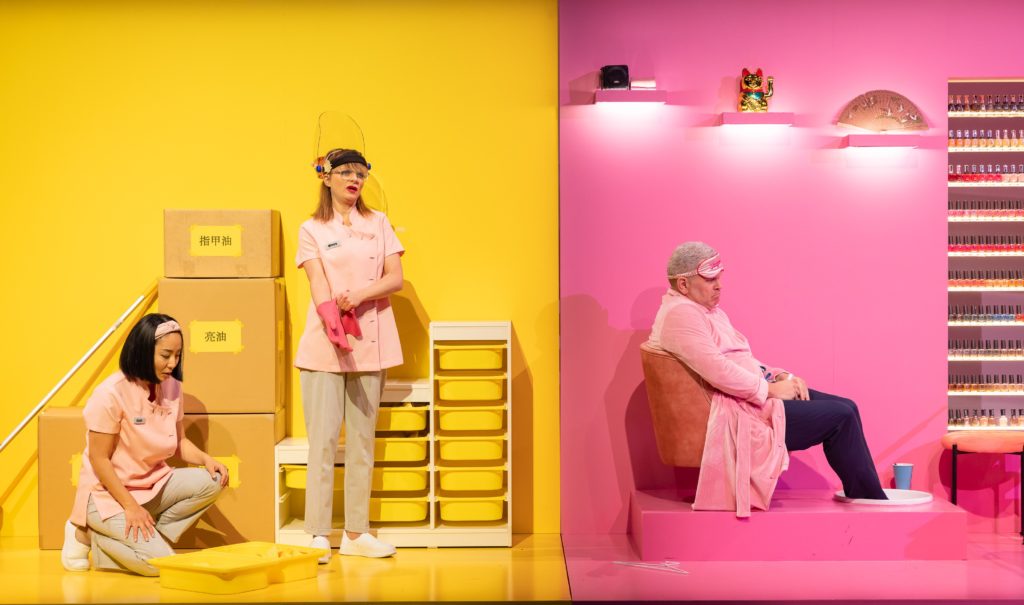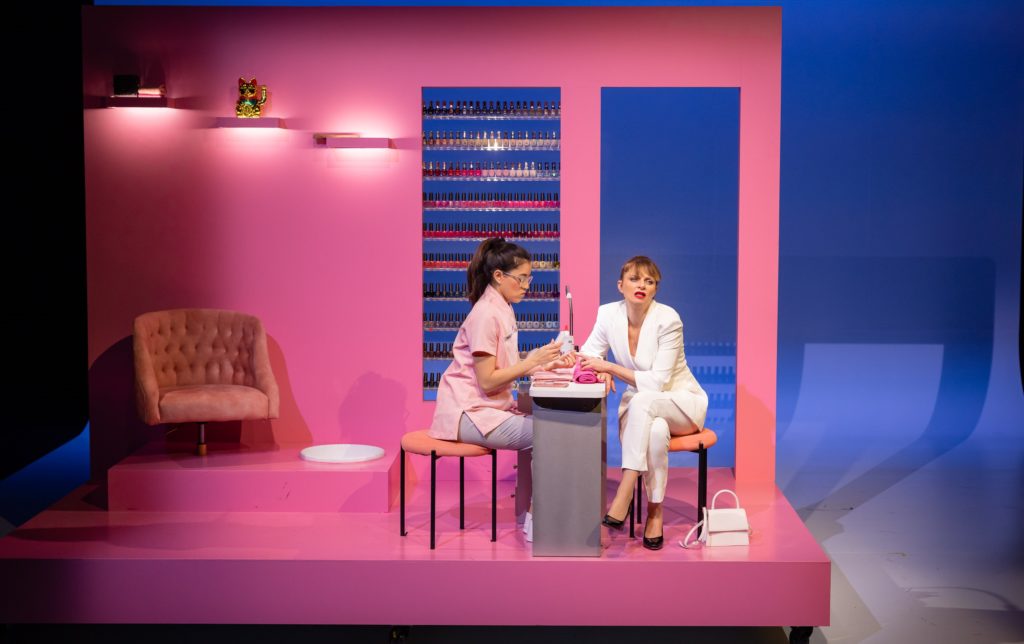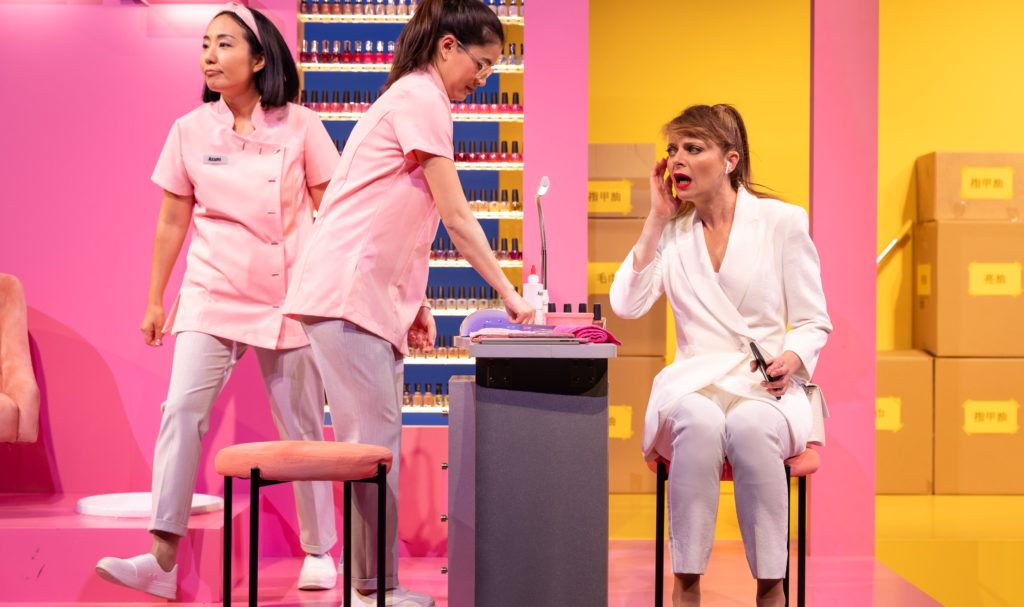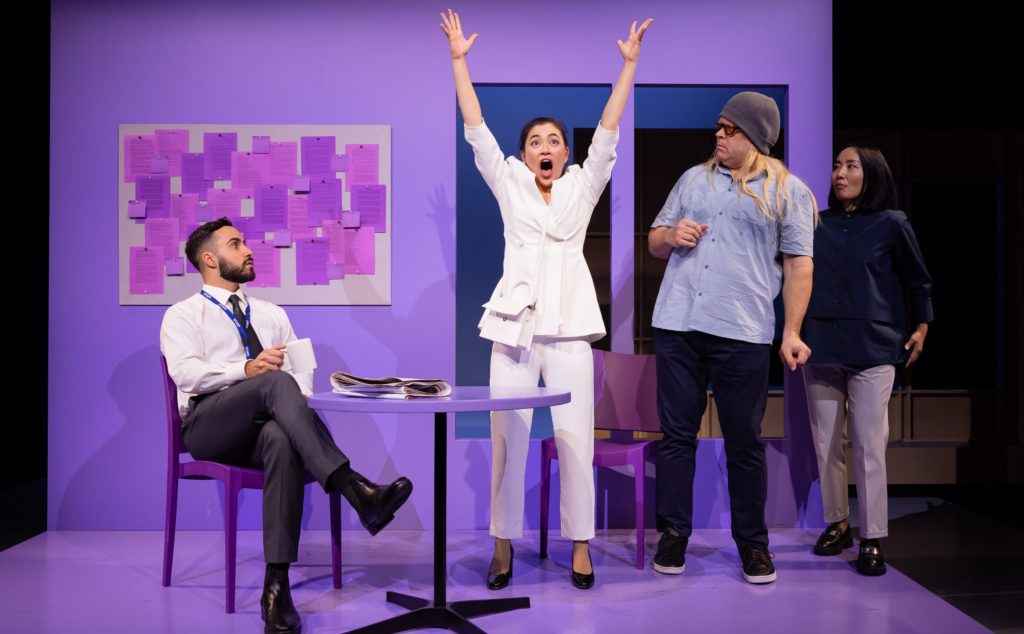Top Coat hits Sydney Theatre Company

By Vaanie Krishnan
Michelle Law’s new body-swap comedy gets a laugh but doesn’t quite achieves its potential.
Body swap stories can be traced back to 1882, and in the films that shaped playwright Michelle Law’s adolescence (Freaky Friday, 13 Going on 30), the trope is used to bring to life the age-old saying “to walk a mile in my shoes”. The premise of a body swap story for race, is therefore, rather brilliant. Law’s Top Coat is a hilarious embodiment of the 90s trope but the unsophistication of its commentary on race means it never quite achieves its potential.

Winnie (Kimie Tsukakoshi) is a hard-working nail technician who dreams of owning her own salon. Everyday her and her colleague Asami (Arisa Yura) must deal with obnoxious customers who underestimate them, often assuming they don’t know English or implying their work is mindless or repetitive. Meanwhile Kate is an ambitious commissioning editor at MBC (Multicultural Broadcasting Corporation) who is; launching a new show, exploiting her Japanese assistant Yuko (Arisa Yura), avoiding input from her Indigenous colleague Marcus (Matty Mills) and, dealing with her boss Barry (John Batchelor) who is taking all the credit for her hard work.

One evening while Winnie is fixing Kate’s broken nail an electrical explosion causes the two to switch bodies. All hell breaks lose as Kate is suddenly treated her like a second-class citizen whilst Winnie is finally given a voice, a platform to empower other people of colour (POC) and a company credit card (cue shopping spree).
The aesthetic of Top Coat, is like being inside a cup of bubble tea. Set Designer James Lew and Lighting Designer Kate Baldwin have created bright, modular travelling stages that connect up and can be stacked to create extending rooms. Each stage is a different colour, reminiscent of the front of a bubble tea restaurant or the Barbie doll packaging boxes from the 90s. Costumes take a similar aesthetic utilising block colours. In the early stages of the play these bright, fantastical transitions fulfil our limited attention spans but they are often clumsy and tedious, a constant reminder that the world we are in is pretend.


Direction by Courtney Stewart inserts physicality to Laws comedic banter, but it is the effortless chemistry of the two leads that makes this work. McMahon as Kate is atrocious and yet undeniably captivating. Even through her intolerable ignorance, she infuses Kate with so much warmth that you can’t help but like her. Tsukakoshi’s acting is a little erratic at first but once she gets going she exudes confidence in Kate’s body. Although idealistic, it is empowering to watch a person of colour command space. Arisa Yura as Asami and Yuko is the voice of the Asian-Australians who choose to meet racial discrimination and appropriation with diplomacy for fear it may threaten their livelihood. Despite some accent slip-ups, Yura does this with grace and poise, an interesting balance to Tsukakoshi’s indignance. Matty Mills brings a love-ability to Marcus, his dynamic as a potential love interest for Winnie’s Kate is endearing and fun to watch.
While Laws script is quite funny in sections, it does its POC characters a disservice in its depiction of racism. Tsukakoshi, Yura and Mills are often given wordy, jargon-filled sermons to rattle off so that Law can make her point. The challenge with woke jargon is that it is the discourse of the already converted. Instead of showing the audience what it is like to ‘walk a mile’, Law is telling us and it completely diffuses the momentum of the piece. What’s worse is that these teaching moments make her POC characters one-dimensional, just like in real life, the POC characters have to carry the burden of teaching while her white lead gets to be funny, flawed and nuanced in her journey of self-reflection.
I’m not sure if Law is underestimating her audience or I am overestimating them. Is this what our audience needs? Text-book like descriptions of what a micro-aggression is? What I do know, however, is that Law has been given a chance to speak directly to the Sydney Theatre Co. demographic and she is not wasting it.
As a critic who is passionate about representation and wants to see more Asian stories on mainstream stages I have to ultimately ask myself, which is worse – to have the play or to have it done imperfectly? Unlike other shows that have been harmful for the conversation around race, Top Coat is funny and well intended, it is simply still maturing.
It’s been a big week for Asian-Australians and theatre lovers alike. Three shows by Asian female playwrights opened on Sydney stages. If Top Coat doesn’t sound like your style, go and see: Golden Blood at Griffith Theatre or Moon Rabbit Rising at 25A, Belvoir Theatre.
You can read about these shows and more Vaanie’s blog: https://thetheatreenthusiasts.wordpress.com/
Short URL: https://indiandownunder.com.au/?p=18069
